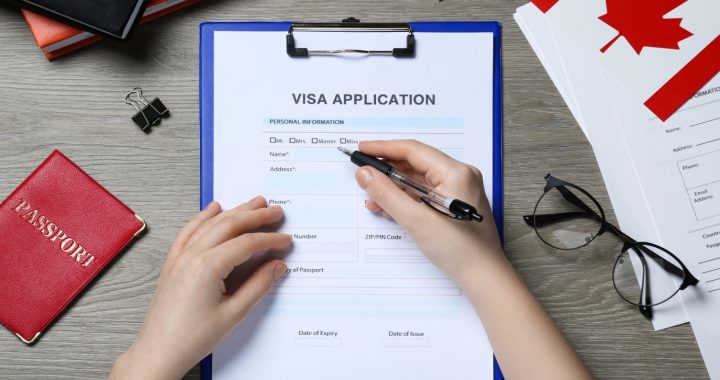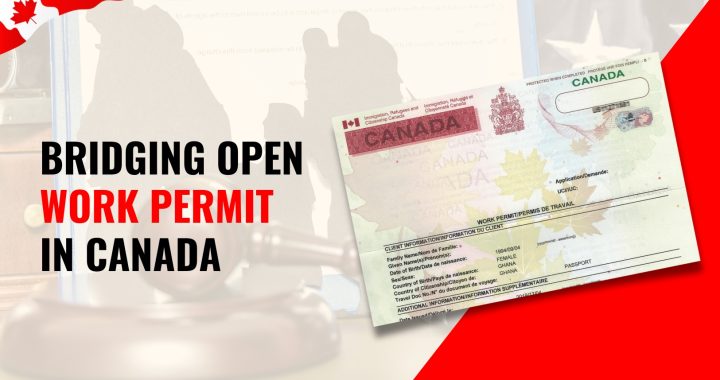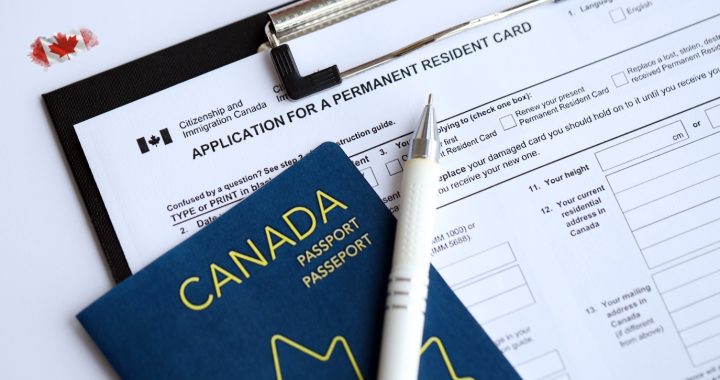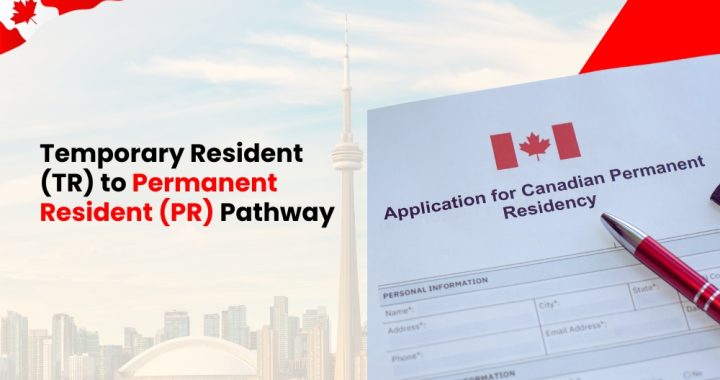How to Convert a Visitor Visa to a Work Permit in Canada

Canada is a land of opportunity, boasting stunning landscapes, vibrant cities, and a welcoming culture. But what happens when you’re in Canada on a visitor visa and land a job opportunity? How to convert a visitor visa to a work permit in Canada is a common question for many in this situation. Can you make this transition, and what does the process look like in 2025?
In this comprehensive blog, we’ll explore:
- Whether it’s possible to change a visitor visa to a work permit
- Reasons you might want to make the switch
- Definitions and differences between visitor visas and work permits
- Current policies, eligibility criteria, and changes expected in 2025
- A step-by-step conversion process (where applicable)
- Alternatives if conversion isn’t an option
- Answers to frequently asked questions
Can You Change a Visitor Visa to a Work Permit in Canada?
The short answer is: it depends. Historically, Canada allowed visitors to apply for work permits from within the country under a temporary policy launched during the COVID-19 pandemic in August 2020. This measure helped visitors stuck in Canada due to travel restrictions transition to work permits without leaving. The policy was extended multiple times, with the final deadline set for February 28, 2025. However, on August 28, 2024, Immigration, Refugees and Citizenship Canada (IRCC) terminated this temporary policy.
As of late 2024, visitors can no longer directly convert their visitor visa to a work permit from within Canada unless they qualify under specific immigration programs or exceptions. Looking ahead to 2025, this trend is likely to continue unless new policies are introduced. For now, most visitors must apply for a work permit from outside Canada.
Why Convert Your Visitor Visa to a Work Permit?
Switching from a visitor visa to a work permit can be a game-changer. Here’s why you might consider it:
- Unlock Job Opportunities: A work permit lets you legally work for a Canadian employer, turning a job offer into reality.
- Extend Your Stay: Visitor visas typically cap your stay at six months, while work permits can allow longer durations tied to your job.
- Build a Future in Canada: Work experience in Canada boosts your eligibility for permanent residency programs like Express Entry, which isa popular goal for many visitors.
Understanding Visitor Visas and Work Permits in Canada
To grasp the conversion process, let’s break down the basics of each visa type.
What Is a Visitor Visa (Temporary Resident Visa – TRV)?
A visitor visa, officially called a Temporary Resident Visa (TRV), is a document issued by the Canadian government that permits foreign nationals to enter Canada temporarily for Tourism, Visiting family or friends, Short-term business activities, etc.
Typically, a visitor visa allows a stay of up to six months, and holders are prohibited from working in Canada.
What Is a Work Permit?
A work permit authorizes foreign nationals to work legally in Canada. It comes in two main forms:
- Employer-Specific Work Permit: Tied to a specific employer, job, and location.
- Open Work Permit: Offers flexibility to work for almost any employer in Canada (with some exceptions).
Work permits are tailored to the job’s duration and requirements, often lasting from months to years.
Key Differences Between Visitor Visa and Work Permit
Feature | Visitor Visa (TRV) | Work Permit |
Purpose | Tourism, visits, business (non-employment) | Employment |
Duration | Up to 6 months | Varies (often tied to job contract) |
Work Rights | No work allowed | Work allowed per permit conditions |
Application Timing | Before entering Canada | Inside or outside Canada (varies by case) |
These differences explain why converting to a work permit is necessary if you want to work legally in Canada.
Is It Possible to Convert a Visitor Visa to a Work Permit in Canada in 2025? What Are the Changes in 2025 in Such Rules?
Current Status
The temporary policy that allowed visitors to apply for work permits from within Canada ended on August 28, 2024. Previously, this policy was a lifeline for visitors with job offers, letting them stay and apply without leaving the country. Its termination means that, as of now, direct conversion isn’t an option for most visitor visa holders.
Current Immigration Policy Updates As of late 2024:
- The end of the temporary visitor-to-work-permit policy means most visitors must leave Canada to apply for a work permit.
- Exceptions exist for specific groups (e.g., spouses of students or workers, or those in certain programs like International Experience Canada).
What About 2025?
Looking ahead to 2025, there’s no indication yet of the temporary policy being revived. Canada’s immigration priorities are shifting, with the government aiming to:
- Reduce the overall number of temporary residents.
- Tighten rules around certain work permits (e.g., spousal open work permits).
- Prioritize high-skilled workers and critical industries.
Without a new policy, converting a visitor visa to a work permit in 2025 will require applying from outside Canada.
Eligibility Criteria for Changing Visitor Visa to Work Permit
With the temporary policy gone, eligibility for changing your status depends on specific programs or exceptions. Here are some possibilities:
- International Experience Canada (IEC): For young adults (18-35) from participating countries, offering open work permits.
- Spousal Open Work Permits: Available to spouses or common-law partners of certain work permit holders or students.
- Bridging Open Work Permits: For those who’ve applied for permanent residency and meet specific conditions.
How to Convert Visitor Visa to Work Permit in Canada: Step-by-Step Process
At present, any new policy to this effect is yet to be announced. However, assuming a Policy to this effect is announced soon step-by-step guide:
Step 1: Secure a Job Offer
- Find a Canadian employer willing to hire you.
- The employer may need an LMIA unless the job is exempt (e.g., under a free trade agreement).
Step 2: Confirm Eligibility
- Verify you meet the criteria for the work permit category or policy in effect.
Step 3: Prepare Documents
- Valid passport
- Current visitor visa
- Job offer letter
- LMIA (if required)
- Proof of qualifications and experience
- Police certificates and medical exams (if required)
Step 4: Submit Your Application
- Apply online via the IRCC portal or through a Visa Application Centre (VAC).
- Pay fees (e.g., CAD 155 or such amount as may be stipulated in the updated policy for the work permit).
Step 5: Await Processing
- Processing can take weeks to months—check current times on the IRCC website.
- You might request interim work authorization if eligible.
Step 6: Receive Your Work Permit
- If approved, you’ll get your permit; if denied, review the reasons and consider reapplying.
Alternatives If Conversion Isn’t Possible
Don’t despair if direct conversion isn’t an option—here are alternatives:
- Apply from Outside Canada
- Return home or to another country and submit a work permit application through standard channels.
- Switch to a Study Permit
- Enroll in a Canadian school to get a study permit, which could lead to a post-graduation work permit later.
- Pursue Permanent Residency
- Programs like Express Entry or Provincial Nominee Programs (PNP) offer a path to permanent residency, including work rights.
- Flagpoling
- Exit and re-enter Canada (e.g., at the U.S. border) to activate a new status. This is risky and requires expert advice. However, in the new policy 2025, this is not possible any further
Frequently Asked Questions
Can I work in Canada with a visitor visa?
No, visitor visas don’t allow employment. You need a work permit to work legally.
How long does it take to convert a visitor visa to a work permit?
Under the old policy, it took 3-5 months. Current processing times vary—check the IRCC website.
Can I apply for a work permit while on a visitor visa in Canada?
Not directly, unless you qualify for a specific program (e.g., IEC or spousal permits).
What if my visitor visa expires while waiting for a work permit?
If you apply before it expires, you may have implied status, letting you stay until a decision is made.
Can I speed up the process?
Some cases qualify for expedited processing—consult IRCC or an immigration professional.
Do I need an LMIA?
Some jobs require an LMIA; others may be exempt based on specific criteria.
Can I stay in Canada while my application is processed?
Yes, as long as your visitor visa remains valid.
Summing Up
Converting a visitor visa to a work permit in Canada was once straightforward under a temporary policy, but that door closed on August 28, 2024. For 2025, unless new rules emerge, most visitors must apply for a work permit from outside Canada or leverage alternative pathways like study permits, permanent residency, or specific programs.
About Post Author
Terry
Terry, a writer and immigration expert with 10+ years as a content creator and advocate, helps newcomers navigate Canada’s system. Collaborating with consultants and agencies, Terry decodes PR risks and job challenges in trusted blogs. A storyteller and maple syrup fan, Terry authored a popular guide for new Canadians.

 Canada Visitor Visa Document Checklist for Smooth Processing of Visitor Visa Application
Canada Visitor Visa Document Checklist for Smooth Processing of Visitor Visa Application  How to Extend Student Visa in Canada
How to Extend Student Visa in Canada  Ultimate Guide to the Bridging Open Work Permit in Canada: Stay, Work, and Thrive
Ultimate Guide to the Bridging Open Work Permit in Canada: Stay, Work, and Thrive  Estimate of Total Cost to Get Permanent Resident Status in Canada as Updated in 2025
Estimate of Total Cost to Get Permanent Resident Status in Canada as Updated in 2025  From Temporary to Forever: Your Ultimate Guide to Canada’s Temporary Resident to Permanent Resident Status in 2025
From Temporary to Forever: Your Ultimate Guide to Canada’s Temporary Resident to Permanent Resident Status in 2025  Who Can Apply for Humanitarian and Compassionate in Canada: Complete Guide
Who Can Apply for Humanitarian and Compassionate in Canada: Complete Guide  New Canada Employment Insurance Rules Effective April 2025- how these are going to affect immigrants?
New Canada Employment Insurance Rules Effective April 2025- how these are going to affect immigrants?